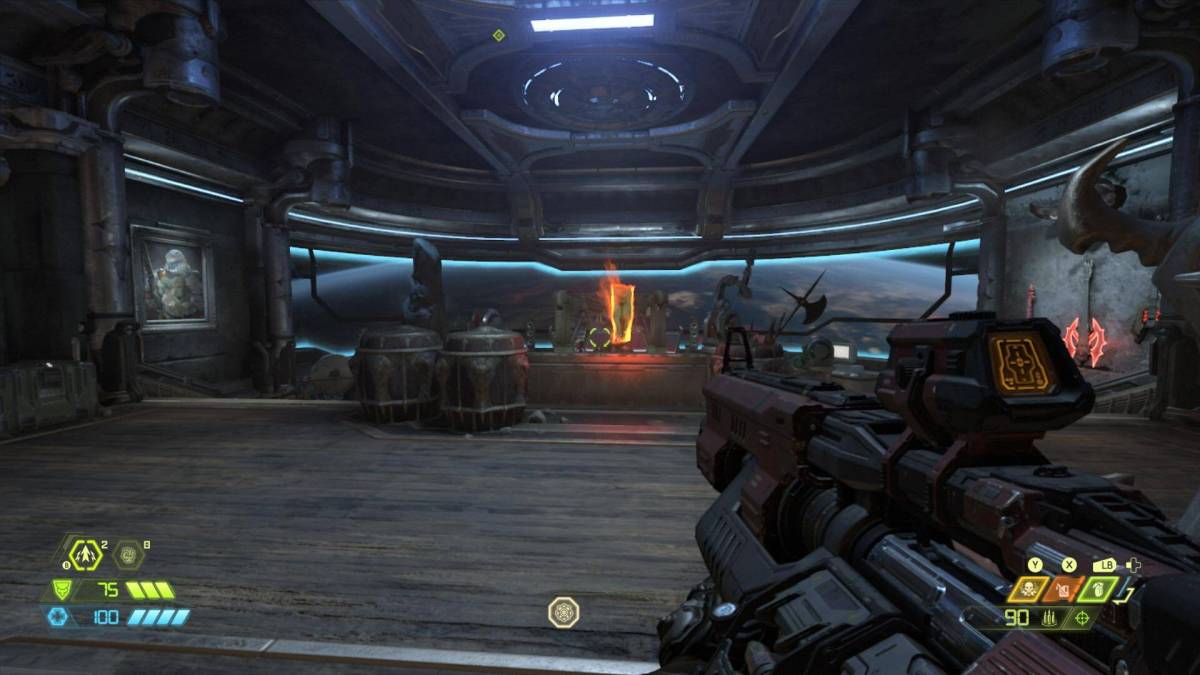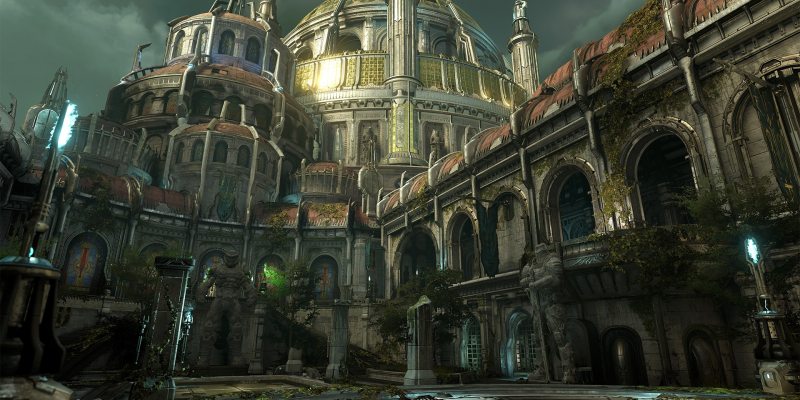This article contains minor spoilers for Doom Eternal.
It’s easy to get lost in the busyness of Doom Eternal. The “rip and tear” mantra of the original is back, and this time around, every aspect of it seems to be boiling over the pot. The combat’s faster, the enemies are more varied, the levels are larger, and there are more secrets packed in them than you can imagine. But in the midst of this cacophony of chaos and noise is a surprisingly calm clearing in the form of the Fortress of Doom, your home base that floats high above the earth and serves as the game’s hub. But instead of just providing a means of access to the game’s various missions, the Fortress of Doom serves as much more, and it proves that when used effectively, video game hub worlds can make a load of difference.
To me, a good hub world is an adventurer’s North Star. It presides over everything and is always there to comfort and guide you if you happen to get lost. It’s also an anchor that can steady you and allow you a moment to catch your breath, reflect on what you’ve accomplished, and ponder where you’ll head off to next. An effective hub world can be as simple as the few rooms at the End of Time in Chrono Trigger, as revolutionary as Peach’s Castle and its surrounding grounds in Super Mario 64, as atmospheric as the Normandy in Mass Effect, or as customizable as Mother Base in Metal Gear Solid V: The Phantom Pain.
The Fortress of Doom in Doom Eternal has shades of all four of those classic hub worlds, and while it might not be quite as iconic as any of the aforementioned locations, it does enough different to stand on its own. The cold, distant architecture and the way it looks down on our ravaged planet brings to mind Magneto’s Asteroid M in X-Men or even Doctor Manhattan’s structure on Mars in Watchmen. Those comparisons check out, given how the Slayer has almost transcended his human shell to become something higher. He is a singular being in this battle against the hordes of Hell, and the lonely nature of the Fortress highlights that.
The only voices present in the dark halls are those of the ship’s artificial intelligence and, later on, the remains of Samuel Hayden. But while the Fortress may be lacking in living companionship, it’s crammed with enough Easter eggs, upgradables, and collectables to make it feel like an interactive museum. And in a series that’s known for constantly referencing itself, that feels right at home.
Longtime fans of Doom, id Software, and even FPS history are going to find a ton spread across the Fortress of Doom to make them smile. Books adorn the shelves that contain references to everything from classic Doom and Quake games, to iconic franchises like Half-Life and Duke Nukem, and even to FPS oddities like John Romero’s Daikatana. The Soul Cube, one of the most powerful weapons in Doom 3, sits on your desk as a paperweight. A 25-year-old PC sits on a desk, waiting for you to find enough floppy disks scattered throughout the levels in order to install a fully playable version of the original Doom. And there are even sad nods to Doom Slayer’s former pet bunny Daisy, whose slaughter propelled the action at the end of the original game. These can be easily glossed over but are much appreciated details for longtime fans.
But the function of the Fortress of Doom isn’t purely aesthetic and atmospheric. There are locked chambers tucked away throughout the hub that can be opened using the Sentinel Batteries you find and earn throughout the campaign. These rooms contain not only the means to upgrade your weapons and armor, but even new character skins that allow you to play the game dressed in the costume from the original Doom, which pretty much amounts to a bright green crop top that exudes a particularly powerful 1993 energy.
Sure, these rewards could easily have been delivered to you via the in-game menus, but there’s a certain kind of satisfaction that comes from seeing your Doom Slayer pull out a massive battery, slam it into a specific slot, and watch as a door opens to reveal your new unlockable. If this were required every time I wanted to upgrade my weapons or armor, it might become tedious, but as it is, it’s used just sparingly enough to remain a novel enjoyment.

There’s an unexpected calmness that comes from poking around the Fortress of Doom between the campaign missions’ bouts of insanity. There are so many new verbs added to the intense action that it begins to feel like you’re playing chess while juggling the pieces at the same time. Combat encounters become self-contained games where you have to read which enemies are on the field, physically and mentally cycle through your weapons, prioritize which you need to take care of first, and create a mental map of the arena, all the while keeping your health/armor/ammo up by utilizing your four refilling attacks. So having these intermissions where you can putz around at your own leisure, view the assorted art and music that you’ve unlocked, and spend some of your Batteries helps create a wonderful pace that remains consistent throughout the course of the campaign.
Another smart thing that id Software does is take this calming atmosphere and completely subvert expectations during a moment in the back half of the campaign. At one point, you have to quickly make your escape from the depths of enemy territory back to your Fortress. However, you arrive back home to discover that the hellspawn have followed you through space and infested your lone place of solitude. Transforming the bridge of your ship into a combat arena was a genuinely surprising moment that took the knowledge I had of the spatial layout from exploring between missions and suddenly forced me to use it to dispatch the enemies.
As I mentioned before, there’s nothing exactly revolutionary about Doom Eternal’s Fortress of Doom. But Doom doesn’t require that. Doom is about taking a state-of-the-art roller coaster ride through its own history, and making it out the other side winded, covered in viscera, and eager to do it all again. With that in mind, the Fortress of Doom provides a wonderful place to catch your breath before hopping right back on the ride.
